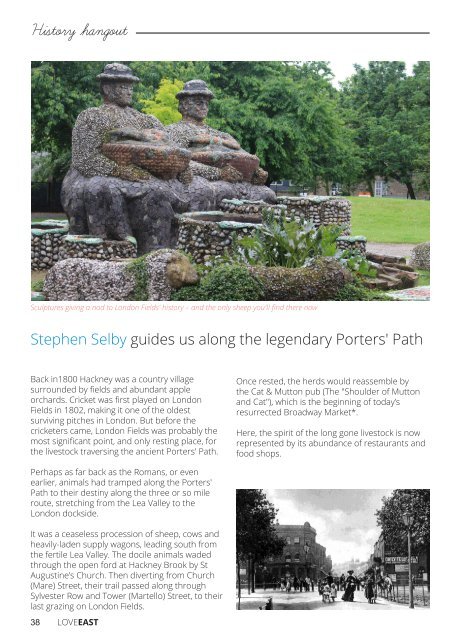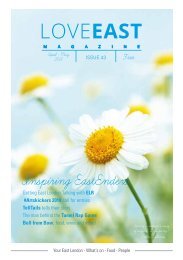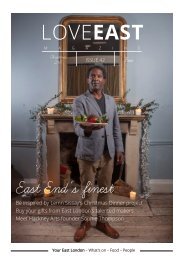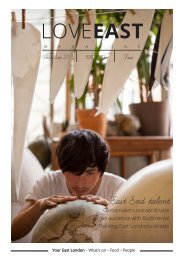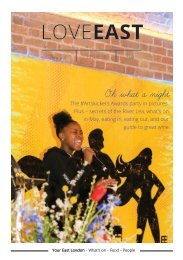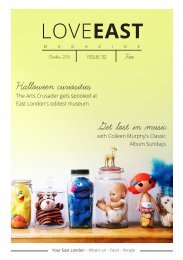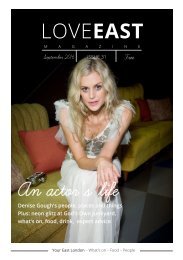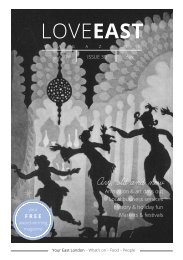Create successful ePaper yourself
Turn your PDF publications into a flip-book with our unique Google optimized e-Paper software.
History hangout<br />
Sculptures giving a nod to London Fields' history – and the only sheep you'll find there now<br />
Stephen Selby guides us along the legendary Porters' Path<br />
Back in1800 Hackney was a country village<br />
surrounded by fields and abundant apple<br />
orchards. Cricket was first played on London<br />
Fields in 1802, making it one of the oldest<br />
surviving pitches in London. But before the<br />
cricketers came, London Fields was probably the<br />
most significant point, and only resting place, for<br />
the livestock traversing the ancient Porters' Path.<br />
Once rested, the herds would reassemble by<br />
the Cat & Mutton pub (The "Shoulder of Mutton<br />
and Cat"), which is the beginning of today’s<br />
resurrected Broadway Market*.<br />
Here, the spirit of the long gone livestock is now<br />
represented by its abundance of restaurants and<br />
food shops.<br />
Perhaps as far back as the Romans, or even<br />
earlier, animals had tramped along the Porters'<br />
Path to their destiny along the three or so mile<br />
route, stretching from the Lea Valley to the<br />
London dockside.<br />
It was a ceaseless procession of sheep, cows and<br />
heavily-laden supply wagons, leading south from<br />
the fertile Lea Valley. The docile animals waded<br />
through the open ford at Hackney Brook by St<br />
Augustine’s Church. Then diverting from Church<br />
(Mare) Street, their trail passed along through<br />
Sylvester Row and Tower (Martello) Street, to their<br />
last grazing on London Fields.<br />
38 LOVEEAST


